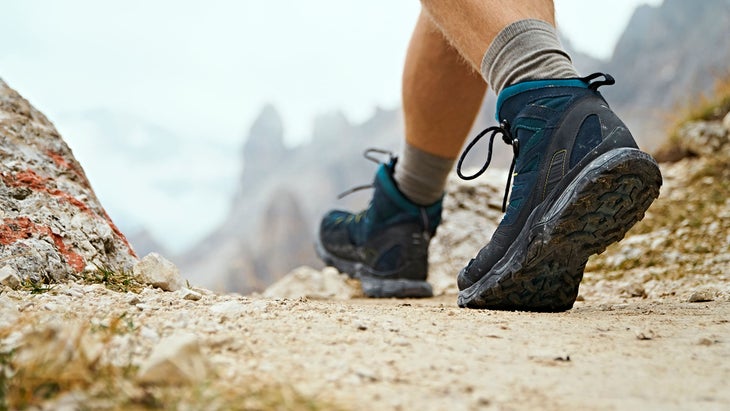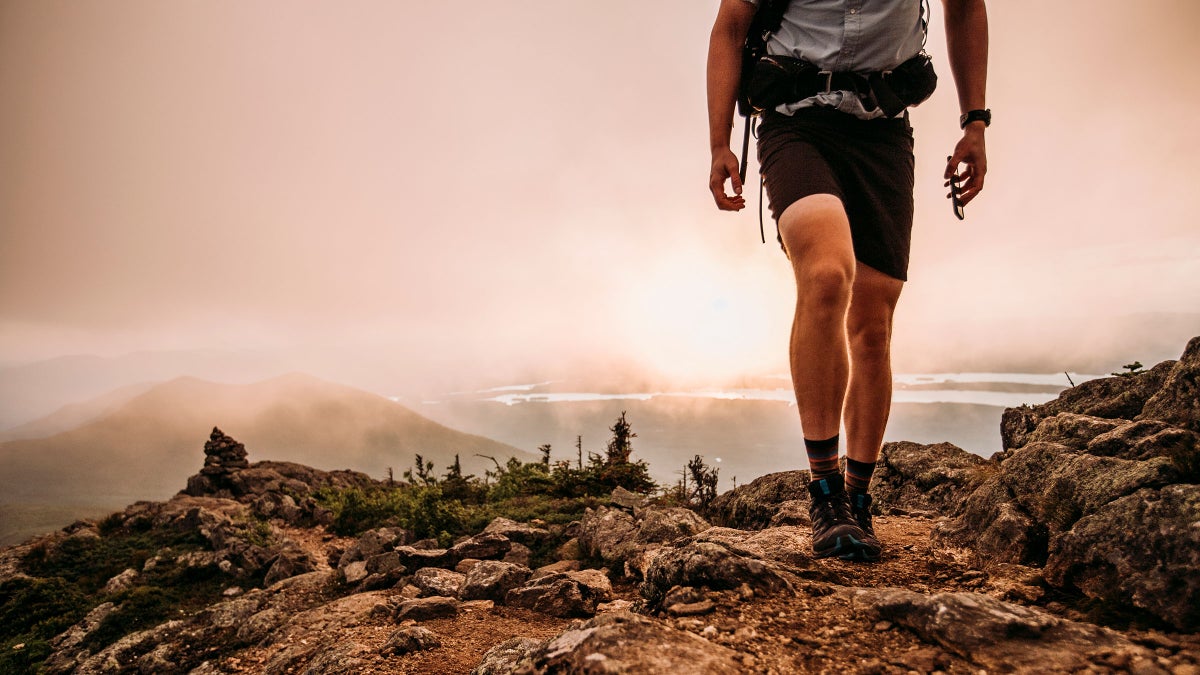Products You May Like
Do you dream about hitting the trail for a long—really long—hike? In Ask a Thru-Hiker, record-setting long-distance hiker Liz “Snorkel” Thomas answers your burning questions about how to do it.
Dear Snorkel,
I’m in average shape and about to embark on a thru-hike. Walking for hours every day is more exercise than I usually get. What physical changes can I expect during my thru-hike?
Mr. Body
Dear Mr. Body,
A thru-hiker’s first long trail does often result in some changes to their body. The longer the trail, the more likely the hiker may experience a change, so a Continental Divide Trail hiker is more likely to experience some body changes than a John Muir Trail hiker. What that means for you depends on you and personal circumstances.
It’s very common for AT and PCT hikers to to experience a change in their shoe size, sometimes a permanent one. Just being on your feet all day alone can impact your foot size and width. Add a pack and a rough, rocky trail for months on end, and you may find your feet have expanded. Your feet may bounce back to their original size after the thru-hike is over—but not necessarily. This is one reason I advise first time thru-hikers to refrain from buying all their hiking shoes before their trip. You never know how much your feet may change over a hike, so it’s best to buy as you go and adapt your shoe size along the way.
Many–but not all–thru-hikers find that they lose weight or that their body becomes smaller, especially around the midsection. Everyone’s body is different, but I know of at least one hiker who lost more than 50 pounds over 2,800-plus miles and 147 days on the Continental Divide Trail. It can be challenging to hike while your pants or shorts are falling down from the body mass you’ve lost. This is one reason I advise thru-hikers–first time and repeat hikers alike–to opt for stretchy pants or a belt and budget for a new pair of pants mid-trip.
Some hikers, especially men over 50, may experience very rapid weight loss, enough to potentially impact their energy levels or even worse, their organs. If you fall into this at-risk demographic, I advise you to talk with your doctor before the trip so you can discuss strategies to maintain a healthy amount of weight. Many hikers find that on top of their normal hiker diet, taking meal replacement supplements that contain a balance of protein, carbohydrates, and fats can help keep some weight on.

Despite major changes in the fuel needs of your body over the course of a thru-hike, there’s some evidence that about 3-5 months into a new exercise regime, your basal metabolic rate adjusts, meaning you won’t burn calories at the same rate. Scientists are just starting to explore what endurance exercise can mean for our nutritional needs.
Some hikers–often women–find they actually gain a little weight or volume, usually as leg muscle mass. All the climbing and ascending from hiking day after day will make your legs stronger, after all. Conversely, those who start their thru-hike with a lot of muscle mass may find they lose muscle mass in some parts of their body (such as the biceps) and gain muscle mass in their calves or quadriceps. This is all part of the body recognizing how it needs to change to adapt to the daily movement on a thru-hike: Our daily activities on thru-hikes require leg muscles much more than arm muscles. This is all part of the body recognizing how it needs to change to adapt to the daily movement on a thru-hike.
Many people who menstruate find their cycles change during their thru-hike. They may experience spotting, irregular timing, or their period may disappear altogether as the hiker loses body fat. Most find that once the trip is over, their cycle returns to as it was before their thru-hike.
Ironically, many hikers discover their appetite diminished in the first few weeks of their hike as their body adjusts to intense endurance exercise. This can be compounded by heat, altitude, or low humidity as they walk through new ecosystems. In fact, many PCT thru-hikers lose their appetites in the Sierra–ironically, a part of the trail with the most elevation gain where they will likely need to expend the most calories. Many hikers end up setting alarms on their watches to remind themselves to get some nourishment every few hours, even if their appetite is gone. That loss of appetite can contribute to the aforementioned weight loss.
One of the biggest challenges for thru-hikers after they return from a long trail is adjusting their eating habits. After six months of eating larger than normal portions of foods higher in fat than a typical diet, many hikers find it difficult to transition back to their pre-trail fare.
In short: Yes, your thru-hike will change your body. But that’s part of the excitement of going on a thru-hike. It’s a way that we can learn more about ourselves and experience how a long hike changes us. The changes we experience are visual, but also we experience changes in how we fill and exist in our bodies. Mental and physical changes both can have big impacts–but only one of them will require you to invest in a new pair of pants.
